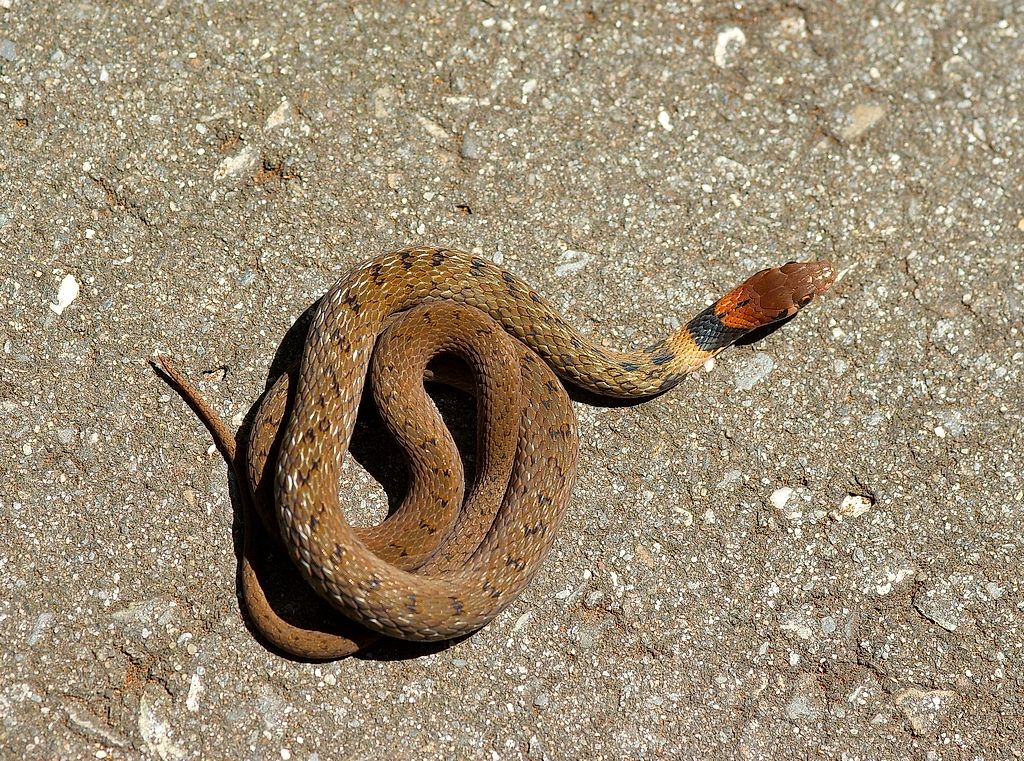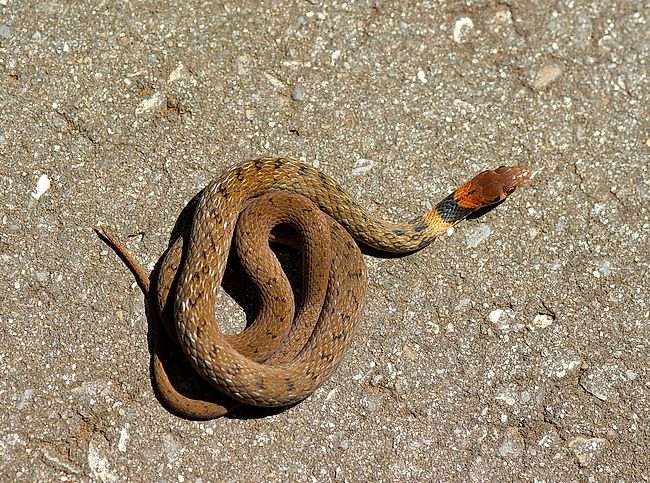Rhabdophis swinhonis
Swinhoe's Grass Snake, Taiwan Keelback
斯文豪氏游蛇, 台灣頸槽蛇 (si1wen2hao2shi4you2she2), (tai2wan1jing3cao2she2)
Status: Protected (Cat.III)
Non-venomous
Family
Colubridae, subfamily Natricinae
Max. length
70 cm
Occurrence in Taiwan
Throughout Taiwan, at altitudes of 500-1000 m. Not common.
Global Distribution
Endemic to Taiwan.
Description
Small snake; total length up to 70 cm. There are 15-17 rows of scales, which are all keeled. Head is oval; body is moderately stout; tail is moderately long. Eye is medium to large; iris is dark gray brown and the pupil is round, jet black, surrounded by ring of gray. Tongue has a maroon stem and light gray fork tips. Top of head is uniform dark olive gray to olive brown and the sides are lighter. There is an oblique black band below eye and a larger black band on side of head above corner of mouth. Upper body is dark gray brown with ill-defined to fairly prominent square areas of black, usually arranged in checkerboard fashion especially in anterior two-thirds of body. There is a distinct, thick, and black chevron on the nape, whose apex points toward the body. Anterior or posterior to the cheveron bears a lighter brown to whitish area. The snake has enlarged rear fangs. Ventral head and neck are cream to dirty white. Ventral body is cream to light gray, mottled with deposits of coarse dark pigment; the pigmentation is progressively more intense posteriorly. Some individuals have blackish ventrals. Anal scale is divided and subcaudals are paired.
Biology & Ecology
This docile, diurnal snake inhabits the floors of forests, bushlands, and other humid
environments. It preys mainly on frogs and lays between 6 and 15 eggs per clutch.
When threatened, it may expand its throat and neck transversely, but hardly ever bites.
Its nuchal glands secrete a brown liquid whose purpose is yet to be determined,
but possibly serves as a predator deterrent when sprayed, similar to
Rhabdophis tigrinus formosanus.
Etymology
Rhabdophis comes from the Greek words rhabdos, meaning "rod" or "wand", and ophis, meaning "snake";
swinhoei : in honor of Robert Swinhoe, English naturalist, collector and first European consul in Taiwan, who collected the type specimen.
The Chinese name 斯文豪氏游蛇 (si1wen2hao2shi4you2she2)
means "Swinhoe's (斯文豪氏) water (游,
actually: swimming) snake (蛇)".
In Mainland China, this species is called 台灣頸槽蛇 (tai2wan1jing3cao2she2),
meaning "Taiwan (台灣) neck-grooved (頸槽)
snake (蛇)", "neck-grooved" referring to its nuchal glands.
Notes
This is the first recorded endemic snake species in Taiwan.
Further Info














